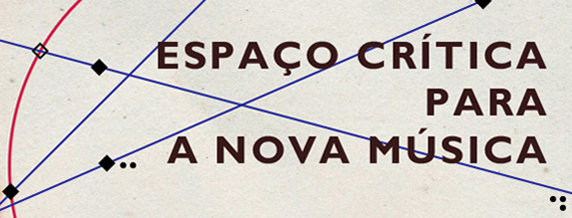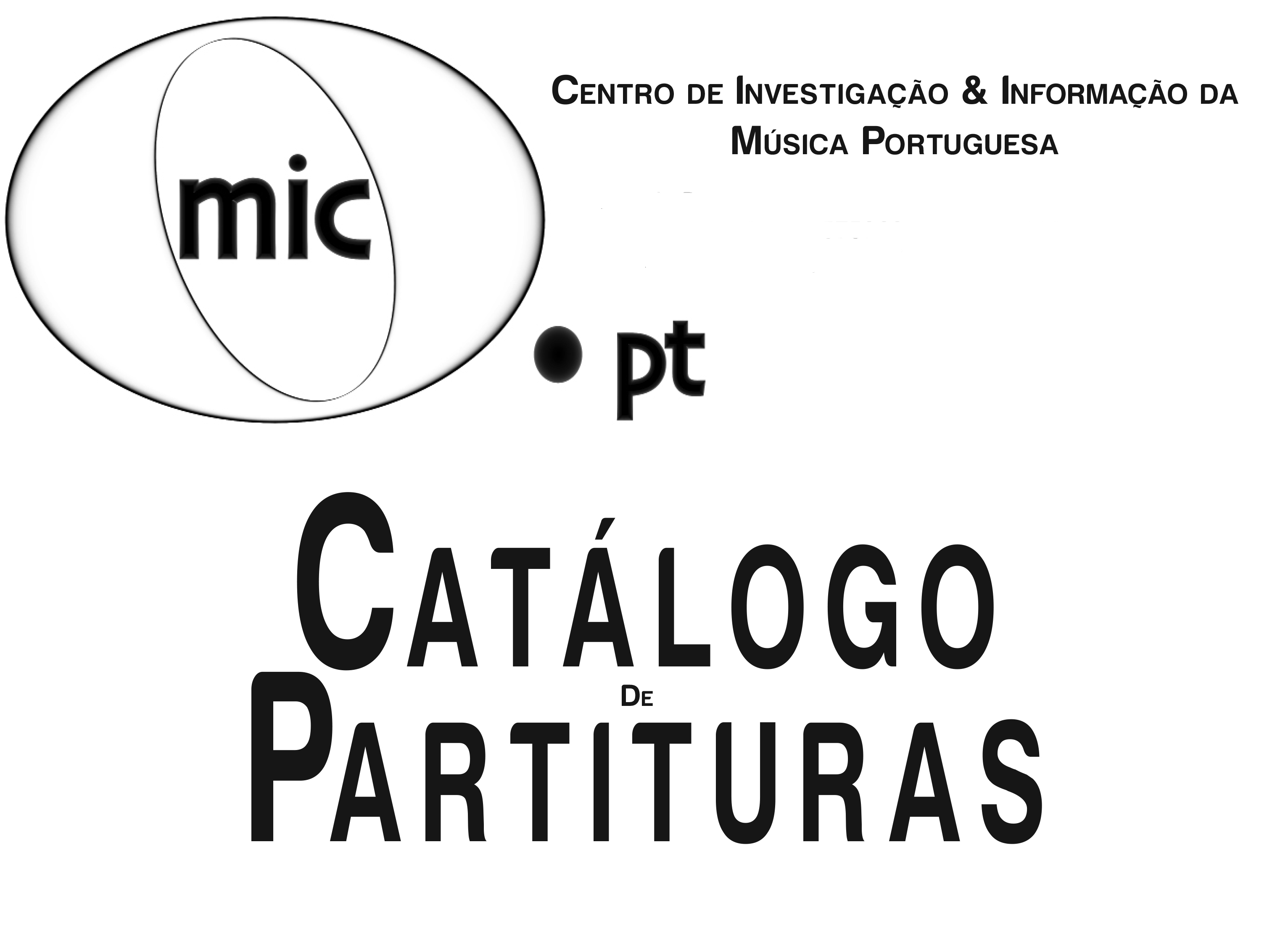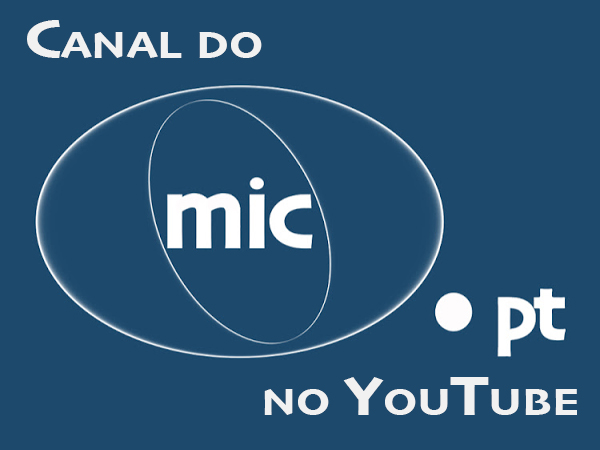Born in 1939 in Viana do Castelo, Cândido Lima, composer, pianist, teacher, essayist and music critic, is one of the most prominent figures on the Portuguese contemporary music scene. His philosophical attitude towards life and art, as well as towards composition, has always been the one of creative freedom – not only as a result of his cultural or social roots, but also as a kind of genetic condition. “I am, as any of us, «a human being in a situation», and a man always follows his circumstance. And my circumstance has always meant working outside, quite outside from the centres of decision – not only in political but also in economical and aesthetic terms. I’ve got used to being free since quite early. So the conclusion of every interview that I give should always be that I am actually free.”[1]
Cândido Lima studied Piano at the Conservatoires in Braga, Lisbon (until 1967), Composition in Porto (1970), as well as Philosophy and Humanistic Studies at the Catholic University in Braga (1968-73), after his military service on the Bolama Island, (Guinea-Bissau). Between 1970 and 74 he attended the Darmstadt and Bayreuth International Summer Courses, as well as, throughout the 1970s, many other music courses and seminars in various European cities (with Nadia Boulanger, Aloys and Alfons Kontarsky, Gérard Frémy, Mauricio Kagel, György Ligeti and Karlheinz Stockhausen, among others). He continued his studies at the University of Paris, obtaining the Master’s Degree in Aesthetics and Musical Arts (1976), the Diploma of Further Studies (1978) as well as the Doctorate of the 3rd Cycle (1983), both under the supervision of Iannis Xenakis, composer with whom he maintained close contact until his death in 2001 (he made research during many years towards a Doctorat d’État, which has remained unfinished: “Une esthétique de l’audiovisuel comme miroir de la composition musicale – esquisse d’un essai interdisciplinaire multimedia. Le parcours du son original du compositeur jusqu'à son arrivée au télespectateur"). He also studied Analysis and Conducting with Gilbert Amy and Michel Tabachnik and attended several electronic and computer music courses at the University of Paris VIII (Vincennes), the University of Paris I-II – Panthéon-Sorbonne, and IRCAM.[2]
In Portugal Cândido Lima has had a significant role in the development of courses, seminars, conferences and festivals dedicated to new music (for example the Viana do Castelo Music Weeks). As critic and essayist he has written articles for various key publications as well as for national and regional press, not to mention numerous studies on Western art music. Since 1963 he has collaborated with the Portuguese Radio and Television in making programmes dedicated to contemporary music – in 1987, together with Júlio Montenegro he received a special Prize of the Press. Since 1972 he has been writing texts for the VERBO Encyclopaedias, and interviewing composers such as Iannis Xenakis, Pierre Boulez or György Ligeti. In 2003 Cândido Lima wrote “Origins and Secrets of Contemporary Portuguese Music. Music through Sound and Image”, which presents a path of a Portuguese composer, by approaching some technical, aesthetic and stylistic aspects, as well as in which he describes his personal experience of influences, confluences and encounters… In this book Cândido Lima tells his story while introducing some of his works in the context of the history of Western music, particularly from the second half of the 20th century. ”I would like these pages to show that creation is for me a pure act of freedom and responsibility, where the limits are established by pure ethical codes and by normative principles imposed by the language mechanisms and the individual psychological behaviour. For me, to compose is not an act of any public battle, but rather an act of interior struggle.”[3]
In 1973 Cândido Lima founded the Grupo Música Nova (New Music Group), which he directs and where he plays the piano. With the Ensemble he has given many premiere performances of works by both Portuguese and foreign composers in Portugal and abroad (Iannis Xenakis, Karlheinz Stockhausen, Pascal Dusapin, Tristan Murail, Kaija Saariaho, Jorge Peixinho, Amílcar Vasques Dias, among many others). The Group has maintained a regular activity, being at the moment constituted by around 15 performers. This number remains open, depending on the programme, repertoire and the available budget. Nevertheless the Group’s main goal has always been the promotion of music by contemporary and 20th century composers of all aesthetic and ideological tendencies.
In spite of his exceptionally rich curriculum, when asked about his musical roots Cândido Lima always goes back to his youth and to the time when he was organist at the Cathedral of Braga or at the Church of Santiago in the city of Braga. It seems that the organ practice, and particularly improvisation, was one of the components that gave the composer the foundations for his future development as a composer. “My childhood, adolescence and youth were surrounded and bathed in a kind of multi-culture, in a world simultaneously religious and profane, cohabited by a kind of pantheism and a hybrid religiousness, by paganism and Christianity. It was at the same time happy and melodramatic, poor and fatalistic, joyful and gloomy, rural and proletarian, dramatic and light-hearted; (…). As a young organist at the Church of Santiago (Braga), a place of common cult of the city’s population and students, and at the Braga Cathedral, I was in the spotlight (I am talking of me at the age of 18-19). I outstood the students of higher years and provoked admiration, yet not always well received by some professors. And this would give me great concern. (…). Without actually realizing it I began fostering this desire to broaden the technical, instrumental and reportorial possibilities on the organ. Passages and harmonies from «Lohengrin», «Tanhäuser», «Parsifal», (…), Bach, Franck, (…), Respighi, Casella, Debussy, Ravel, Prokofiev or Puccini, flooded the churches where I used to perform. I was challenging the orthodoxy, by making public improvisations, as an exercise or by transposing liturgical music and running the risk of making mistakes…”[4]
This attitude of opening towards different aesthetics, in other words, a conscious appreciation of the contemporary melting pot of diverse musical languages, is perhaps one of the features distinguishing Cândido Lima on the panorama of Portuguese new music. “Defending «all the music» has always made part of me, as professor and composer, attributing this liberty according to the constraints of each period or place in life. Yet the continuum, the harmony, the rhythm submerged by the time, the melody submerged by the psalmody of the whole, the sound «in itself» as a congenital subject, motivated and dissected in the attack, dynamics, duration, in the waveform; the micro and macroscopic act of listening, which drives the listener to a state of hypnotic consciousness, of levitation, of a serene involvement in the space, of energy and relaxation, of involvement in the Jungian and Bachelardian archetypes; these are some of the centres of attraction in my search for dialogue by means of a purely aesthetic gesture, which is an abstract and spiritual manifestation of the same concern in concrete life, either in action or in the word. The grammars coming from diverse origins are the basis, as well as the binding and irradiating foundations of these postulates or principles, generating emotion and communication.”[5]
As a natural result of the above-mentioned attitude, Cândido Lima’s approach has also always been accompanied by a more scientific point of view, that has to do not only with the acoustic or spatial qualities of sound, but also with the inclusion of technology side by side with more traditional means. Following the experience gained during his studies in Paris (at IRCAM or with Iannis Xenakis), Cândido Lima was the first composer to introduce computer music in Portugal. “Oceanos” and “A-MÈR-ES” (both from late 1970s) are the first Portuguese works for orchestra and electronics generated by computer. His electroacoustic music, domain in which he also developed a pioneer work in Portugal, reveals a taste for the exploration of long sequences or continuums of timbrically complex textures, evolving slowly and subtly. His music, in which he makes use of processes created either with instrumental and vocal means or with the support of electroacoustic means or computers, indicates the boundary between determinism and liberty. While composing works on the edge of various artistic movements, Cândido Lima has been gradually achieving a synthesis of different influences resulting in a kind of “fusion music”[6] , a kind of synthesis of various cultures and systems. “The composition techniques of Scriabin, Bartók, Varèse, the Viennese School, Messiaen, Berio, Xenakis, Stockhausen, the futurists (…); electroacoustic, concrete and electronic music, music defined by mathematical models, by computer hardware and software, up to the sound’s smallest particles – a study case for nanotechnology; all this makes part of the abundance, which the composer cannot and should not ignore nor waste. Bach and Beethoven are, even today when I listen to them, timeless pillars for learning how to structure and amplify a work, which exceeds all philosophical and scientific theories. «Stop, listen and watch», is the recommendation for composers of every direction.”[7]
Cândido Lima’s music embraces all kinds of formations and musical genres, from choral to orchestral pieces, from chamber and solo works to electroacoustic music, among others. Some of his works, like for example the 2009 “Músicas de Villaiana – Coros Oceânicos”, involve the use of audio-visual means and blur the boundaries between what today is considered to be vulgar and erudite, profane and sacred. In the case of “Músicas de Villaiana” not only did Cândido Lima include a rapper in the piece’s instrumental set, but also in its fourth part the audience is invited to use their mobile phones during the performance. Another side of his vast work is didactic music, to which the composer has dedicated himself quite recently. “Workbooks of Inventions. Introduction to Contemporary Music. Sounds to Discover. Titles to Invent”[8], published online by the mic.pt, is a collection of small pieces, 10 per “Workbook”, for different instruments. Written regularly from 2006/07, the “Workbooks” are comprised of short and abstract compositions, like aphorisms or epigrams, in the fashion of Bach’s “Preludes” and “Inventions”, or miniatures, which various 20th century composers were writing in between other works of greater proportions. Dedicated to new generations of performers and intended for all kinds of audiences, the “Workbooks” have been conceived to integrate the curricular programmes of music education. Referring to a youth-friendly terminology, one can find here a collection of frames, samples or links to works, authors, as well as classical, modern and contemporary music movements.[9] Apart from the “Workbooks” the mic.pt digital score editions also include other didactic works by Cândido Lima (such as “Variações à volta do sol - 10 Happy Birthday Cards” or “Canções para a Juventude”), and by other Portuguese composers: Clotilde Rosa, Christopher Bochmann, Ângela Lopes and Jorge Peixinho.[10]
Comparably to John Cage, Cândido Lima is above all a thinker, a composer-philosopher and this is the reason why his music has a manifestly experimental character and nature, dominated by the desire to express “the ephemeral and the eternal, the gods’ gift of translating everything into music.”[11] This year on March 16th the Sá de Miranda Municipal Theatre in Viana do Castelo presented a monographic concert dedicated to the Cândido Lima’s work – a form of a preview (pre-listening) of a double CD entitled “Para além das árvores” (“Beyond the Trees”), which was released in mid-April by the Portuguese label Numérica. As one can read in the review to this event by Virgílio Melo, published by the New Music Review Lounge (Espaço Crítica para a Nova Música): “One must make reference to this excellent initiative of the municipality to promote such manifestation, proving to be indifferent to some common «urban myths», concerning the public’s taste and the artistic pertinence of the so called avant-garde music. Giving value to a prominent figure from the 1960s generation is, apart from the media commemorations, an act of promotion of living art and true patrimony. (…) [and an act of appreciation] of Cândido Lima’s rich musical personality.”[12] On December 18th the Música Viva Festival invites its audience to an electroacoustic concert by the Loudspeaker Orchestra, during which it will be possible to listen to Cândido Lima’s 1980s piece “Autómatos da Areia”, among other works by Karlheinz Stockhausen, Iannis Xenakis, Edgar Varèse, Morton Subotnick, Bernard Parmegiani and Jonathan Harvey.
---
1 Interview to Cândido Lima in: Sérgio Azevedo, "A Invenção dos Sons. Uma Panorâmica da Composição em Portugal Hoje", Lisbon 1998, p. 159; English translation: Jakub Szczypa
2 Biographical facts compiled from various sources:
"Lima, Cândido de." Grove Music Online. Oxford Music Online. Oxford University Press. Web. 19 Nov. 2013. http://www.oxfordmusiconline.com/subscriber/article/grove/music/16661; Tomás Henriques, “Lima, Cândido” in: Enciclopédia da Música em Portugal no Século XX, direction by Salwa Castelo-Branco, Lisbon 2010, p. 697-98 (English translation: Jakub Szczypa); “Candido Lima” – biographical note from the composer’s profile on the mic.pt
3 Cândido Lima, “Origens e Segredos da Música Portuguesa Contemporânea. Música em Som e Imagem”, Porto 2003, excerpt from the “Prelúdio”; English translation: Jakub Szczypa
4 From the Questionnaire / Interview to Cândido Lima published in December 2013 in the Portuguese version of the mic.pt In Focus section; English translation: Jakub Szczypa
5 Ibidem
6 “Fusion music” (“música de fusão”) is a term used by Cândido Lima in: Ângelo Martingo, “Contextos da Modernidade – um inquérito a compositores portugueses”, Porto 2011, p. 34; English translation: Jakub Szczypa
7 From the Questionnaire / Interview to Cândido Lima published in December 2013 in the Portuguese version of the mic.pt In Focus section; English translation: Jakub Szczypa
8 Title in Portuguese: “Cadernos de Invenções. Introdução à música contemporânea. Sons para descobrir. Títulos para inventar”
9 Excerpt from the introduction to “Workbooks of Inventions” (“Cadernos de Invenções”) by Cândido Lima, published by the mic.pt; mic.pt, Parede, 2013
10 To consult the complete list of didactic and other Portuguese works published by the mic.pt, please access the mic.pt online catalogue mic.pt online catalogue
11 "Lima, Cândido de." Grove Music Online. Oxford Music Online. Oxford University Press. Web. 19 Nov. 2013. http://www.oxfordmusiconline.com/subscriber/article/grove/music/16661
12 To read the whole review by Virgílio Melo, “Alvorada p'ra esse mar (Sunrise for that Sea)”, as well as other reviews to Portuguese new music visit the New Music Review Lounge





